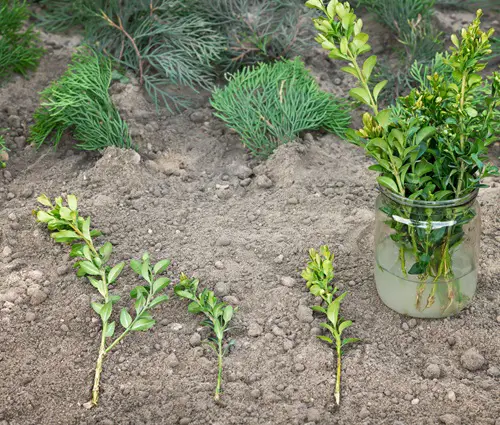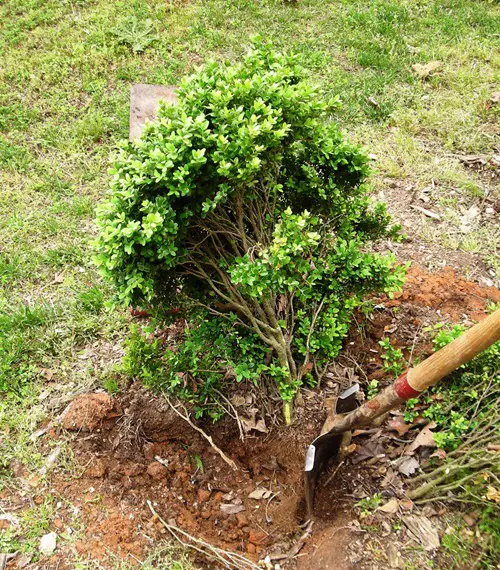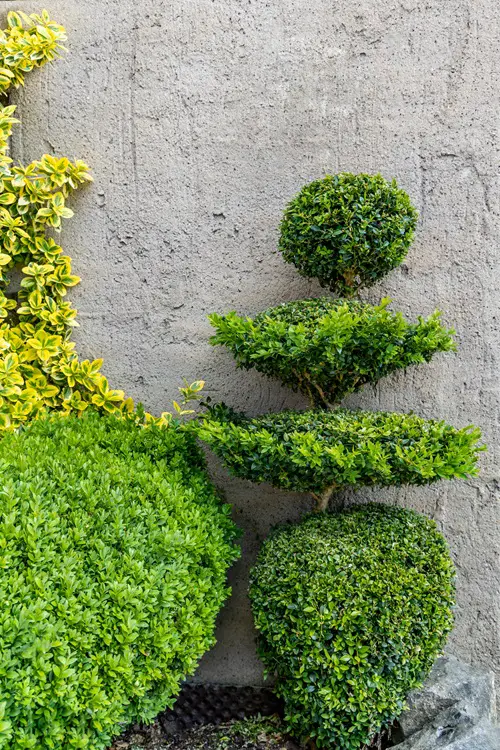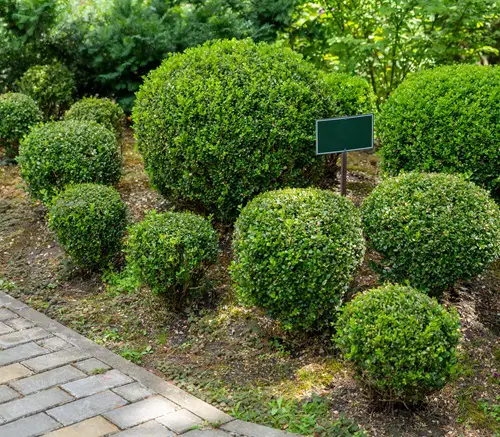Is your beautiful evergreen hedge growing wild and getting a little out of whack? Here’s What You Do With Overgrown Boxwood!

Boxwood shrubs are simply the best for garden borders, hedges, and fences. Evergreen, adaptable, and lending solid design and symmetry—what could go wrong? With time and neglect, these plants can grow too huge for you to handle! So, what do you do with overgrown boxwood? Relax, we’ve got you!
Spotting an Overgrown Boxwood
The age-old boxwood (Buxus) is a shrub or small tree that has been around for over 6000 years. Originating in Europe and Asia, it is a slow-growing, evergreen, low-maintenance plant with dense growth ideal for hedging and topiaries.
Hardy to USDA zones 5-9, the real challenge with this plant isn’t getting it to grow—it’s keeping it in check! Its vigorous growth can quickly scale up to 20 feet and spread shaggily if unmanaged.
So, if your boxwood grows too big for its space or if the branches look leggy and too dense on the inside, it’s time for a nip and tuck! Another indication to trim is when it starts losing its perfect symmetrical form, and you find dead or brown leaves inside due to poor airflow!
What to Do With Overgrown Boxwood?
1. Out Of Shape, Use Your Shears!
As soon as you see your shrub losing shape, it’s time to bring out your shears and snip it back into form. Pruning is easy, but taking away major chunks of the plant can shock it. Do it gradually to keep it in check over a few seasons.
Remember to prune right before the growing season starts, preferably in late winter if you’re in a warm climate or early or mid spring. This allows your boxwood to heal and reduces stress.
2. Turn it Into a Beautiful Topiary
Similar to the idea above but with an artistic twist! Instead of simply pruning overgrown boxwoods, try sculpting them into a design of your choice. They can also be trained as bonsai plants.
Keep them compact by regularly shaping them in pots and containers.
3. Divide & Conquer
If that one boxwood hedge is turning out to be a nightmare, simply divide and propagate it into smaller boxwoods. This is better than cutting back overgrown boxwoods as it will distribute the shrubs evenly across the area.
This will also keep the mother plant healthy and in check, allowing good air circulation and less scope for diseases.
4. Changing Homes
While most plants hate being moved about, this one can tolerate a bit of movement. If the plant is still manageable but simply showing signs of explosive growth, it’s a good time to move the entire shrub to a new location where it can freely stretch its legs!
All these moves, like pruning, are best done right at the beginning of the growing period to avoid stress and trauma.
5. Overgrown Bits for Mulch
What do you do with all the extra bits you trimmed off? Mulch! Use the snippings to improve soil texture, fertility, and temperature. In fact, you can use this boxwood mulch around the shrub itself, which benefits from mulching during prolonged dry spells, and for other such plants in your garden.
6. Propagate it
If not mulching, you can also use intact 4-6 cuttings with leaf nodes to propagate new boxwood plants. You can also try it in water!
8. Decorative Leafy Ornamentals
Boxwood clippings can be used to create natural decorative items. Replete with evergreen leaves and bendy stems, they can be shaped into wreaths, tiny tiaras, or even chandeliers! Its foliage may turn bronze when overexposed to bright, direct sunlight.
So, if you’re trimming away these bits, use this color contrast to decorate. Here are ways to use them indoors.
8. Bye Bye Boxwood

The last and final option is to remove the shrub completely. This will provide space for new plants to grow. A bit of diversity every few years is necessary, as a monotonous garden can get boring.
Maybe every 5-6 years, all traces of your boxwood hedge can be removed to grow perennials or even these boxwood alternatives.
Well, what are you waiting for? If you’ve got an overgrown boxwood, put it to good use by doing these things. Let us know how it goes for you in the comments below!




